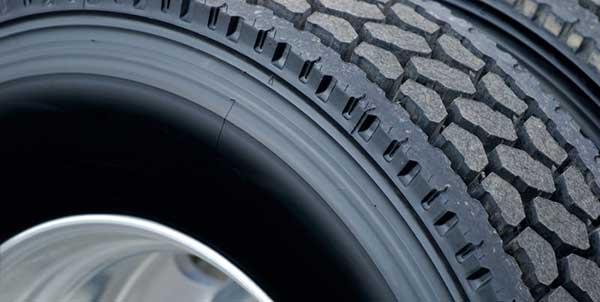Maximizing truck tire management
With the cost of truck tires on the rise,it’s more important than ever for fleets to use all the tools at their disposal to maximize tire removal miles.
Proper truck alignment offers many benefits
Maintaining correct alignment angles important in preventing irregular wear on a fleet’s tires.
Fleets, tires and fuel economy
Every fleet is looking at all viable options for both the tractor and trailer when it comes to fuel economy. So what are these options and do they offer a short return on investment?
Consider all aspects of a fleet tire program
"Iridescent" is a word you probably haven’t associated with your tire program. However, it may describe a concept fleet managers should be thinking about when considering outsourcing and maintenance. Iridescent is defined as "displaying a variety of different colors that change when viewed from different angles." With different "angles" impacting our industry today, here are
Understanding truck tires and air pressure
Since loads vary by wheel position, using the load/inflation tables published by any tire manufacturer will determine the proper tire pressure based on the specific load.

Exploring the future of pneumatic truck tires
What will the commercial over-the-road truck tire (or its worthy replacement) look like in 10 to 20 years? Although we can’t evaluate currently unknown innovations, we can look at developments in other tire types: race, passenger car, aircraft, military and other niche market applications. We now have run-flat passenger car tires that have successfully obsoleted
CSA and tires: An update
Commercial trucking fleets are spending a lot of time these days trying to meet all of the rules and regulations in FMCSA’s rollout of CSA, which officially began December 2010. Fleets and drivers are both affected by CSA. A high score, which is bad, can lead to government intervention for the fleet and potential serious
Keep tires on longer for lowest cost-per-mile
Modern radial truck tires have come a long way. Long-term casing durability is nearly taken for granted today, assuring multiple retreads for most line haul applications. More recently, wear issues (irregular wear on free-rolling axle positions) have been reduced to the point that technicians often suspect mechanical issues rather than simply reporting “tire problems” as
Drivers impact on commercial tire performance
Tire prices are continuing to escalate – and there is a shortage of natural rubber due to a combination of floods and droughts. Natural rubber is needed because it is a key ingredient in truck tires valued for its low heat generation properties. Adding to the escalating cost of tires is the rising price of
Redefining the highway truck energy equation
Every gallon of diesel fuel contains just so much energy (usually quantified as British Thermal Units, or simply BTUs). Truck engines burn the fuel to release energy, or more specifically convert it to another form, and push the truck along the highway. Historically, the approximation has been that 1/3 of the total energy is converted
Commercial tire retread options
Almost 90% of commercial trucking fleets retread their tires at least one time. Steer tires are typically retreaded with a drive tire design the first time. The second retread will most likely be retreaded back to the trailer. Drive tires are retreaded as another drive tire and then back to a trailer design. Trailer tires
Truck tire balancing clarification
As late as the 1970s, some bias ply truck tires came from the factory with balancing “pads” strategically placed inside the tire liner to at least partially correct the uneven distribution of mass around the tire. This helped reduce vibration as the truck rolled at increasing speeds on road surfaces. Of course, then suspension systems
